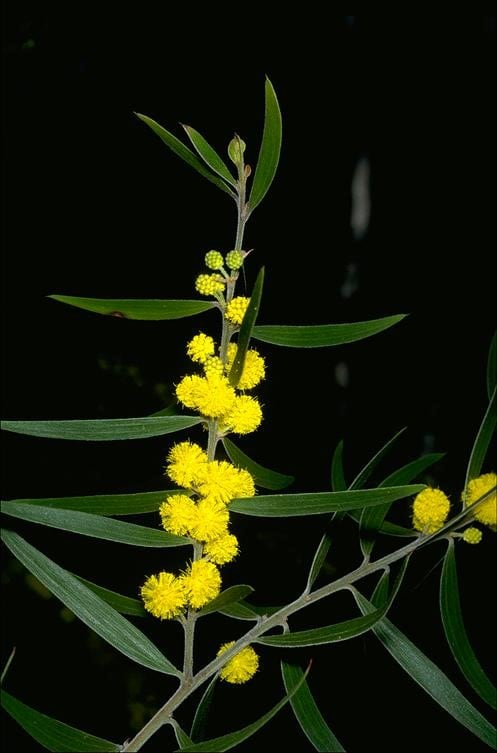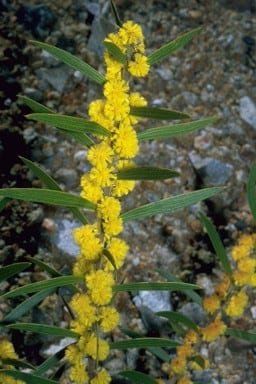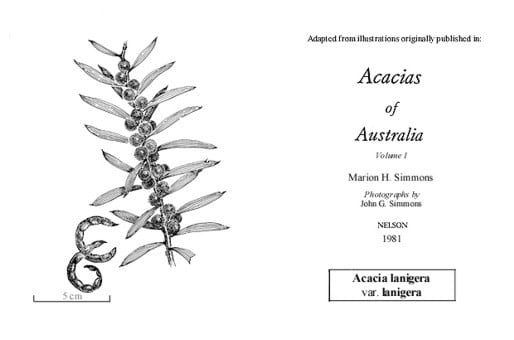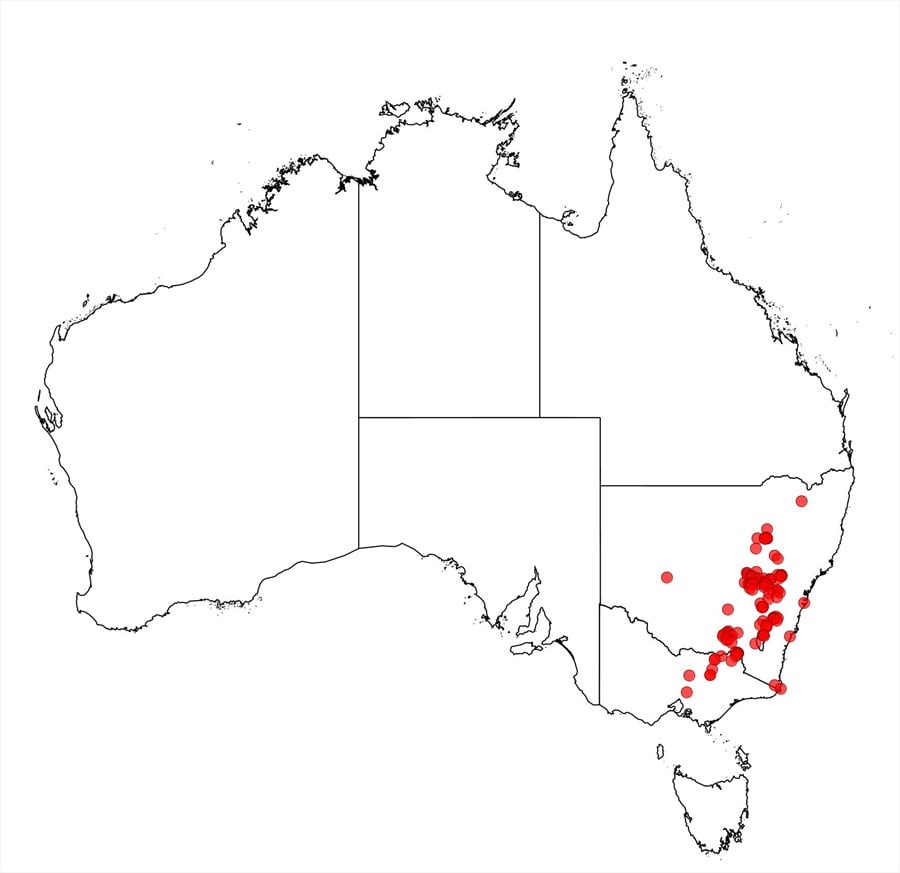Acacia lanigera A.Cunn. var. lanigera
WATTLE
Acacias of Australia
Family
Fabaceae
Distribution
Locally common from the Coonabarabran region, N.S.W., S to between Pine Mtn and Mt Pilot near Beechworth, Vic.; also A.C.T. near Queanbeyan.
Description
Branchlets densely tomentulose to velutinous with patent hairs. Phyllodes commonly oblong-elliptic and straight to shallowly incurved or shallowly recurved, 3–6 (–8) cm long, 4–11 mm wide, sharply pungent with anastomoses few to numerous; gland (2–) 3–13 mm above pulvinus. Peduncles 2–5 mm long, glabrous to moderately hairy; flower-heads 6.5 mm diam., 6–7 mm long.
Habitat
Found in open eucalypt forest, on shale and granite hills, in shallow stony or sandy soils.
Specimens
N.S.W.: 20.8 km from Bathurst on Fremantle road, E.F.Constable 4735 (NSW, PERTH); 3.1 km from centre of Coonabarabran town towards Baradine, N.Hall H78/14 (NSW, PERTH). A.C.T.: Black Mtn, 13 km W of Queanbeyan, R.H.Cambage 3084 (NSW). Vic.: base of N slope of Pine Mtn, M.G.Corrick 5984 (MEL, PERTH).
Notes
Another specimen, collected from between Tiltaldra and Walwa, Vic. (Anon., 24 Feb. 1957, NSW222600), has atypically long and wide phyllodes, which resemble those of A. venulosa. However, it is clearly A. lanigera var. lanigera on account of its strongly curved pods, acute to acuminate bracteoles and glabrous peduncles.
FOA Reference
Data derived from Flora of Australia Volumes 11A (2001), 11B (2001) and 12 (1998), products of ABRS, ©Commonwealth of Australia
Author
Edited by B.R.Maslin
R.S.Cowan, B.R.Maslin
This identification key and fact sheets are available as a mobile application:
URL: https://apps.lucidcentral.org/wattle/
© Copyright 2018. All rights reserved.











